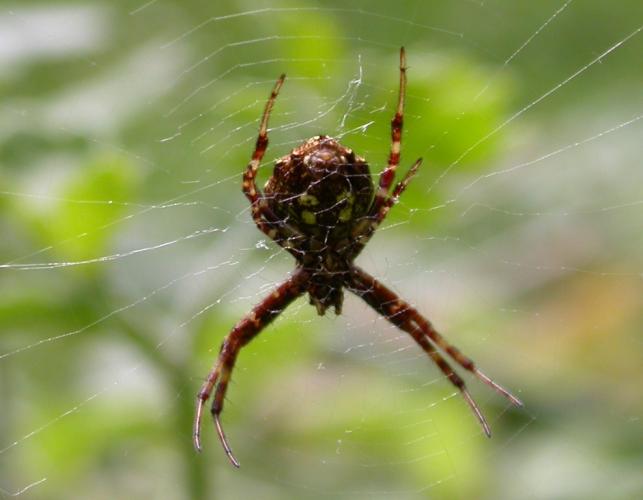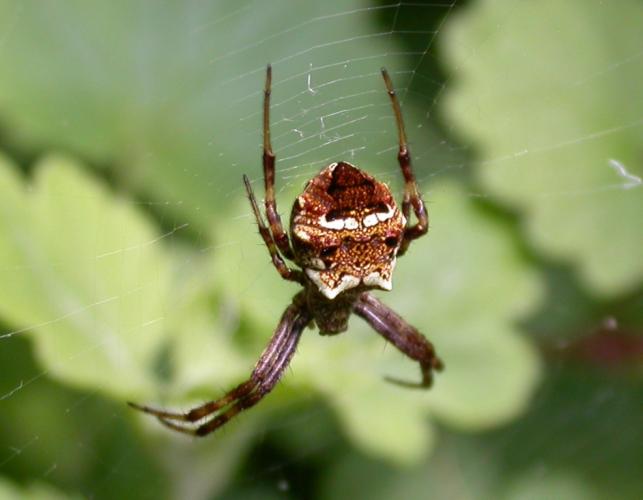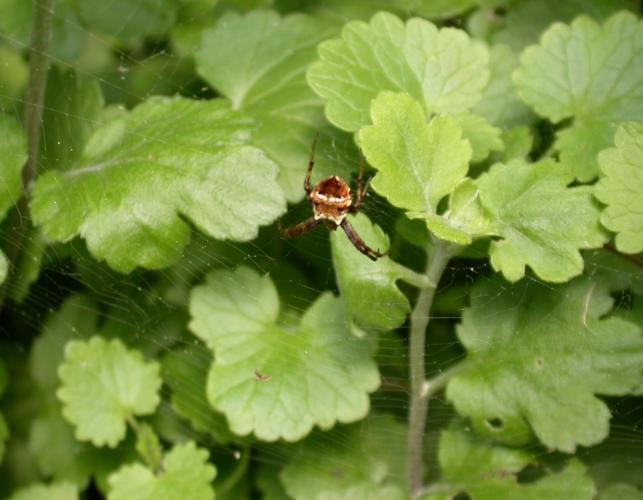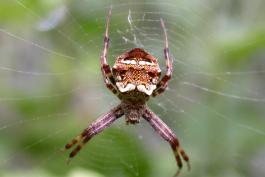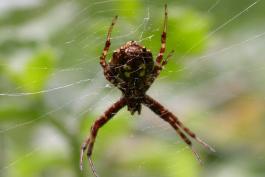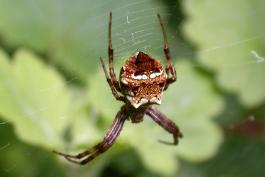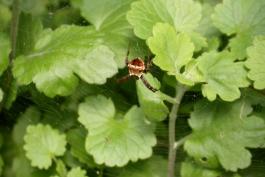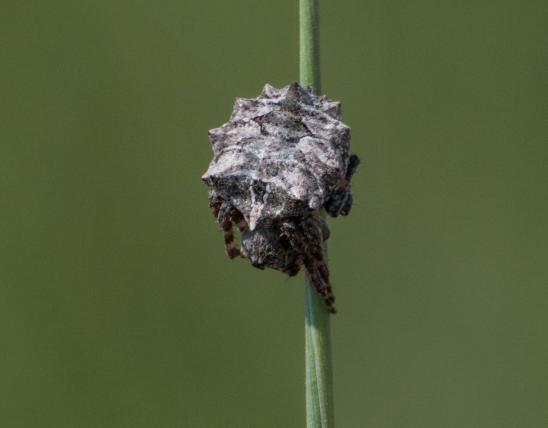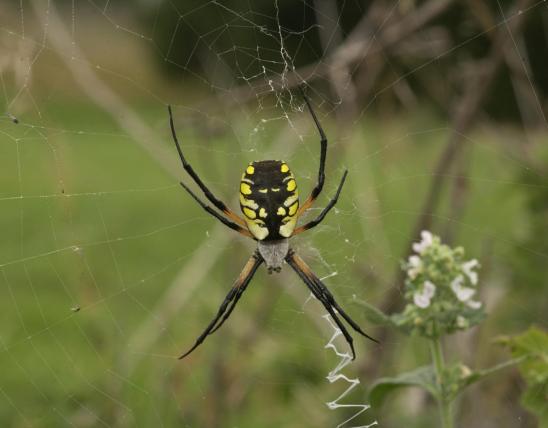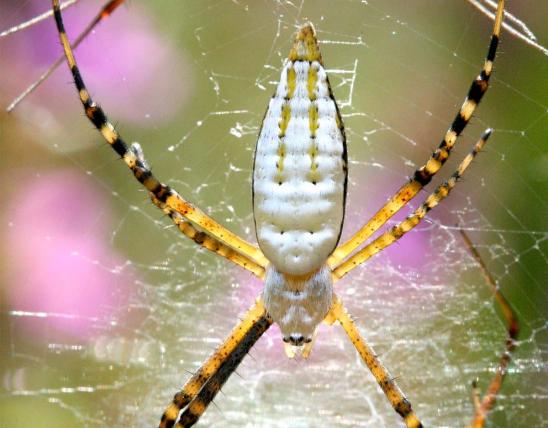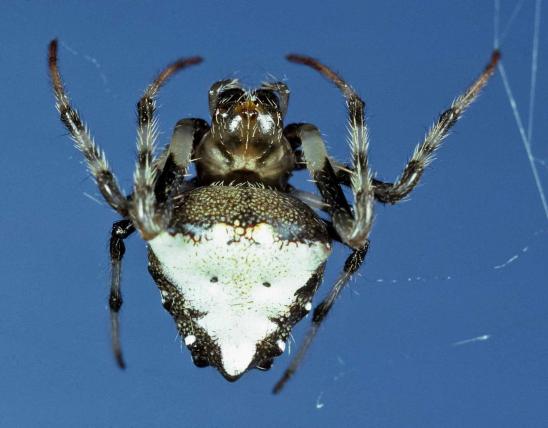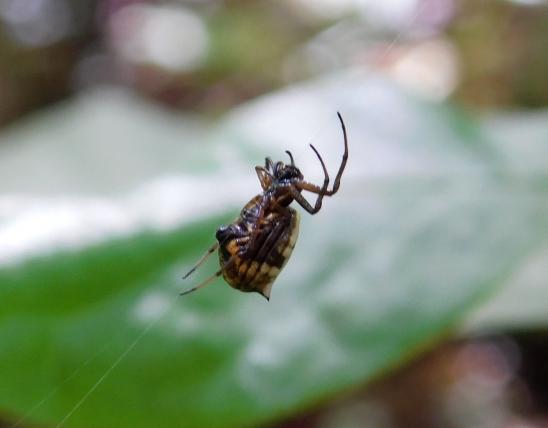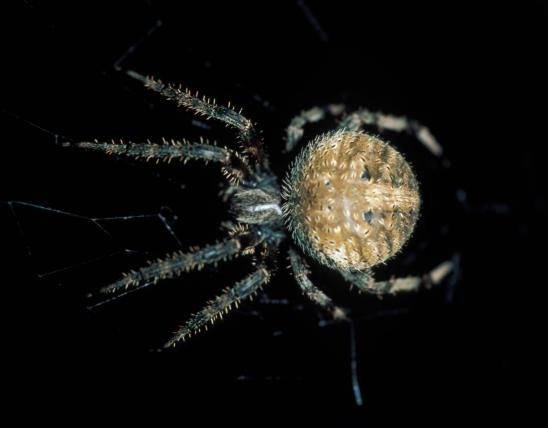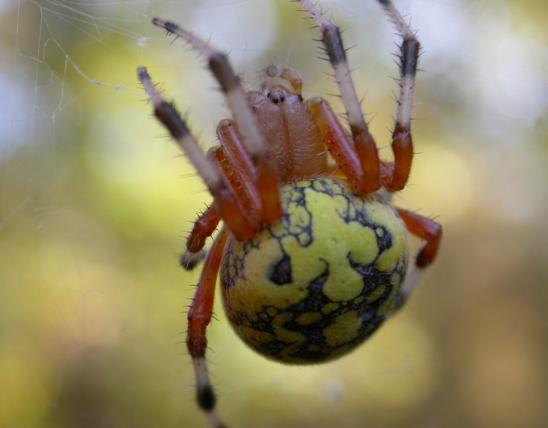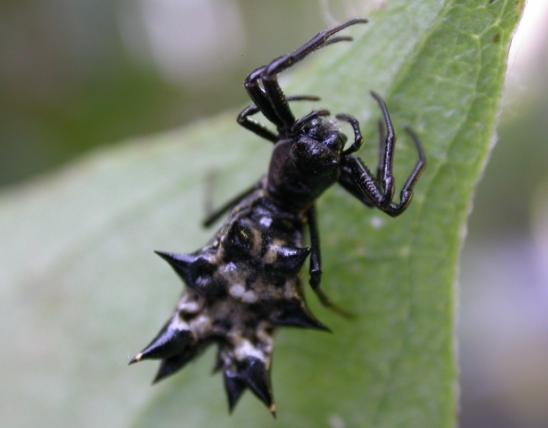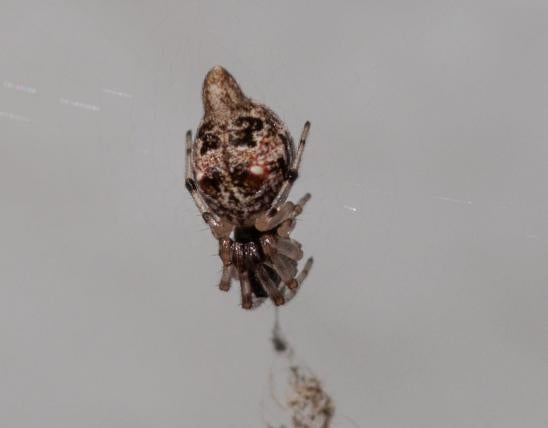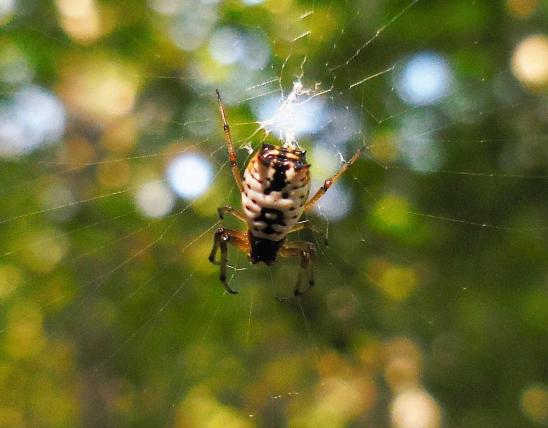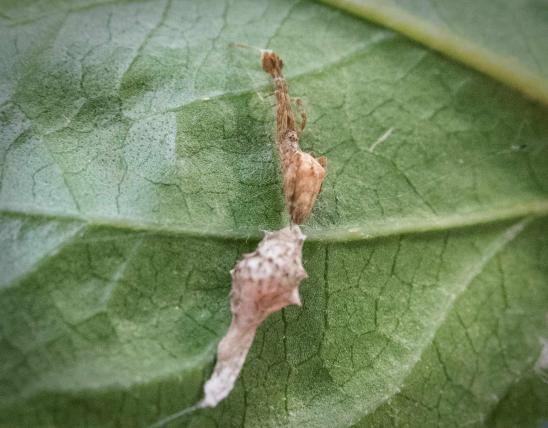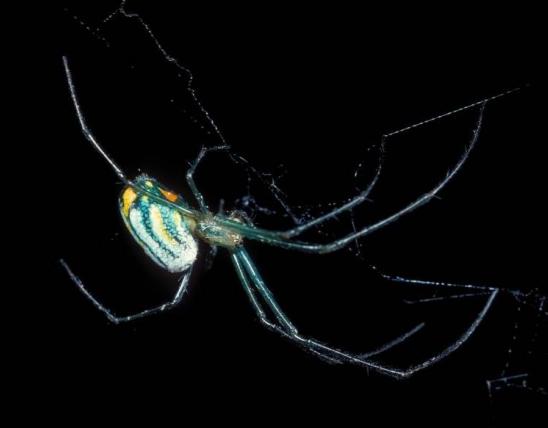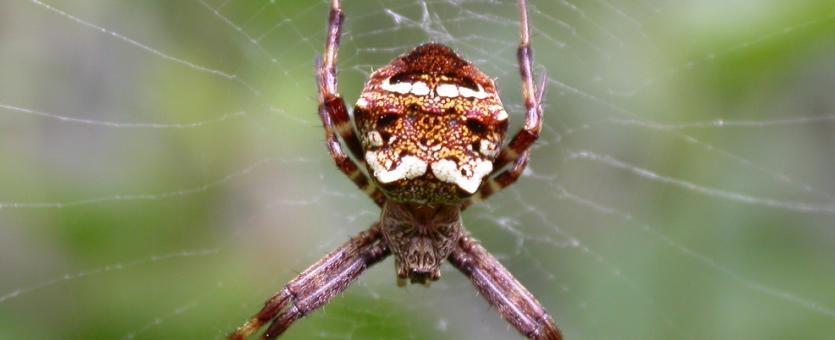
The heptagonal orbweaver is a small, brown and yellow spider that typically hangs head-down, with legs held together in an X pattern, in a small wheel-shaped web built within a few feet of the ground. In females, the head (cephalothorax) is large, flattened, and grayish tan; the abdomen is brown with white and gold markings and a black or dark red, roughly triangular marking near the hind end. There are 3 pairs of angular bumps on the dorsal side (the back). From above, the abdomen looks somewhat seven-sided (“heptagon” means seven-sided). The legs are yellow-brown with dark bands. The body and legs have sparse hairs and small spines. Males are lighter colored and slenderer, with proportionally much smaller abdomens than females.
Length: about ¼ inch (not counting the legs); males and females about the same size.
Statewide.
Habitat and Conservation
Females build small (about 5 inches across), round, vertical orb webs in low vegetation, usually no more than knee-high. Sometimes there is a stabilimentum (zigzag pattern of silk) at the center. When disturbed, the spider drops swiftly to the ground; its light spots instantly darken, making the spider look drab. This color change undoubtedly helps it escape predators. Sometimes a lower wedge of the circular web is left unfinished; this open area might allow the spider to drop away more easily. Web-building spiders usually have poor vision and generally cannot capture food without their webs.
Food
In classic orbweaver fashion, this spider captures small, flying insects in the sticky strands of its web. Typical foods include leafhoppers, small flies, and small moths. Like its larger cousins in the genus Argiope, it sometimes shakes the web to more firmly ensnare a struggling insect; then, it bites the prey and wraps it in silk to subdue it before drinking its fluids.
Status
There is no widely recognized common name for this spider. It is North America’s only member of the genus Gea. Globally, the other spiders in this genus are mostly tropical or subtropical. Gea spiders are thought to be closely related to those in the genus Argiope (such as the familiar but much larger black-and-yellow garden spider). Both groups of orbweavers tend to rest head down at the center of the web, with their legs held in an X pattern, and both can add stabilimenta to their webs.
Life Cycle
Eggs hatch in spring and the young spiderlings disperse and begin building webs, hunting, and growing. Males do not spin webs. Once mature, the males wander in search of a mate, and the females hang in webs eating and awaiting a mate. Once mated, the female focuses on eating and creating egg cases, which are flattened, about ½ inch long, and resemble bits of dry leaves. The first freezes usually kill all the adult spiders, with only the eggs overwintering.
Human Connections
The amazing web patterns of orbweavers have fascinated humans for millennia. Orbweavers control populations of flying insects, many of which are considered pests by humans. Orbweavers don’t bite unless molested, and their bites are not dangerous, anyway.
Ecosystem Connections
These spiders control populations of flying insects. Although they are ferocious to little flies, these delicate creatures are vulnerable to predation themselves, hence their elaborate defensive behaviors. Their egg sacs are relished by many species and provide winter food for many birds.

